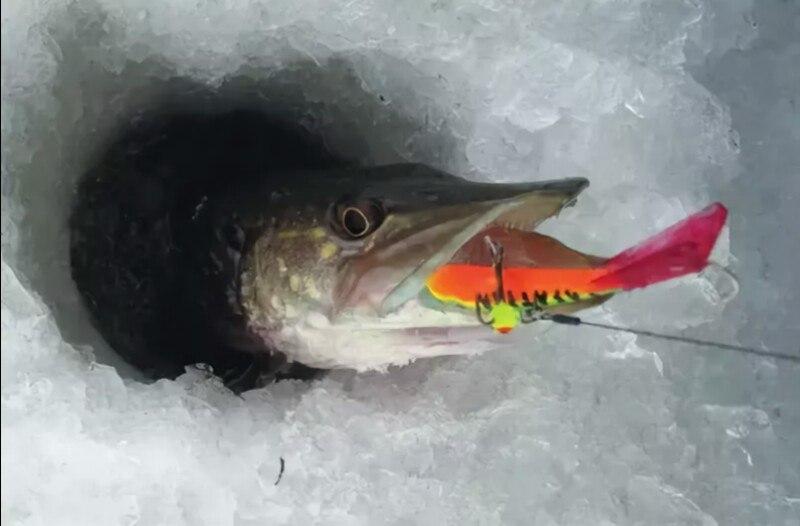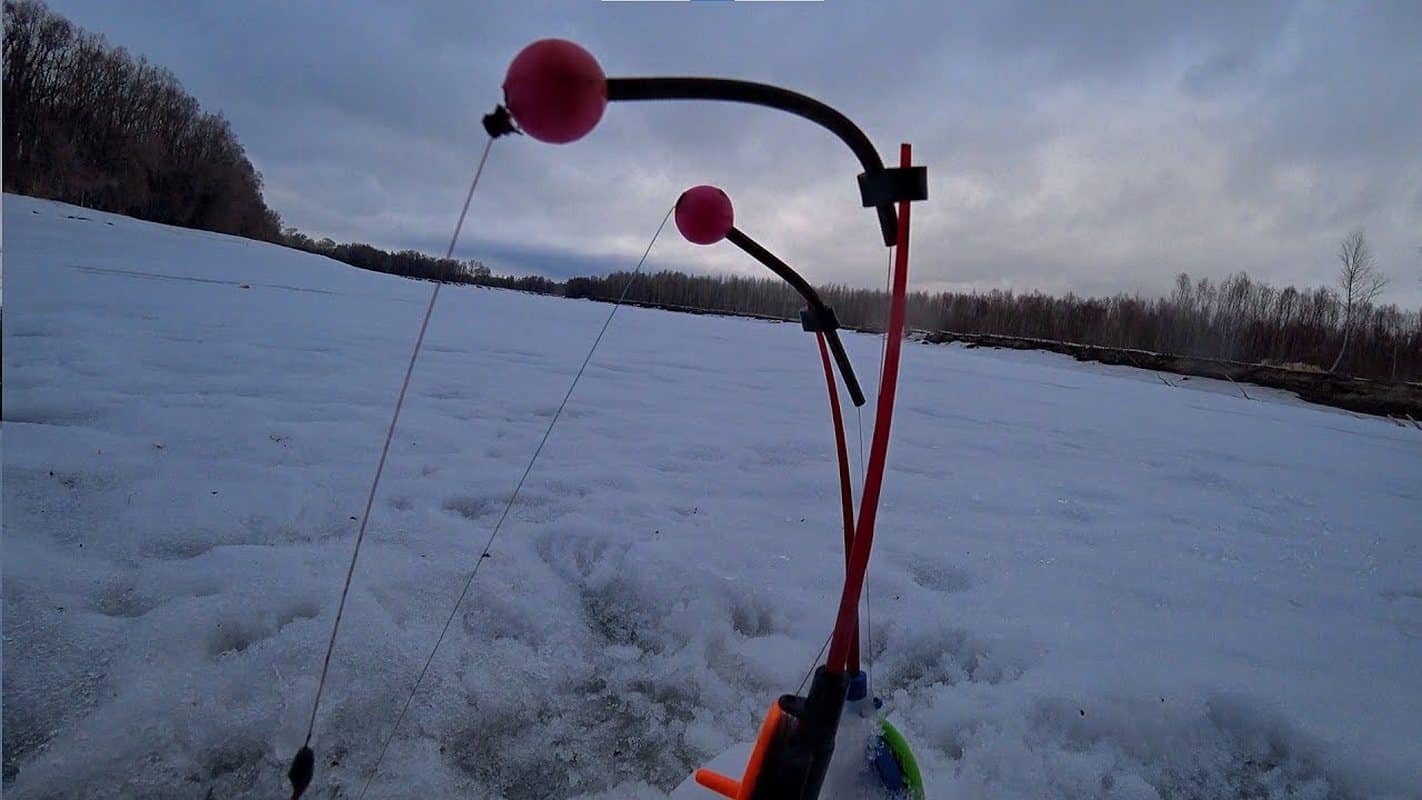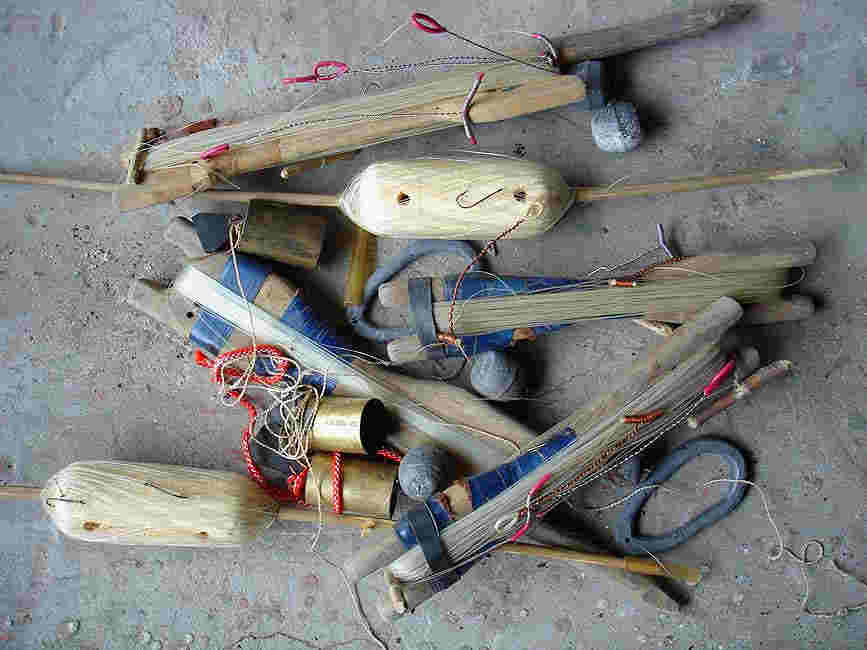Winter season is approaching, although not the most suitable moment for fishing, but, nevertheless, there are a large number of “winter” fishermen who do not imagine how you can postpone the tackle until spring. The main predator, which can be successfully caught from the ice, is the pike, and one of the main active methods of persuading the striped beast to bite is the use of balancers.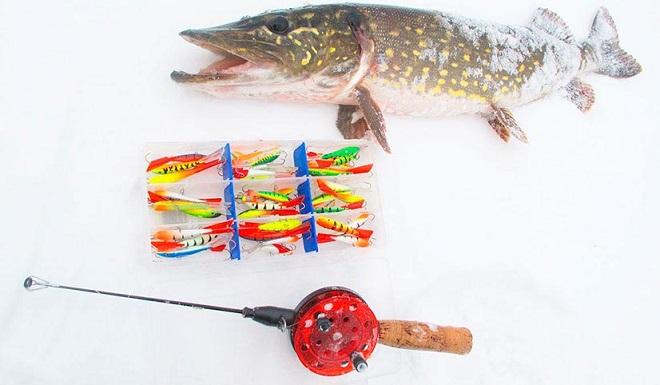
The balancer is of Scandinavian origin, differs from the standard bait in that the lug is located in the middle of the lure (in the center of gravity, not physically), and the hooks are at the edges. Actually, this is the reason for the name, in the water column, the balancer, as it were, gains balance / balance while seductively swaying its edges in the animation.
- When to catch on balancers?
- Fishing for pike on a balancer in winter: where to look for a predator and how to catch
- Predator migration during the confined water season
- Tactics and features of the balancer feed
- What balance bar does a pike bite on in winter: how to choose a catchy type, size and color, rating of the best for 2020
- Size matters
- What color of the balancer is preferable in winter in freeze-up?
- The first basic set for a beginner and more
- Tackle preparation – what to look for?
- Поделиться ссылкой:
When to catch on balancers?
You can fish pike all year round on balance beams – in summer from a boat in a plumb line, in winter from ice. But, in the summer, the choice of fishing methods and types of lures is huge, and therefore balancers are far from the most popular type. Due to the fact that there is no universalism in them, a boat is required, there are more catchy and interesting baits. But in winter, the balancers show themselves in all their glory, in particular, in the wilderness, when they even outplay the spoons. Fishing for pike on a balancer in winter: https://youtu.be/2MoBZgq-52E
Fishing for pike on a balancer in winter: where to look for a predator and how to catch
The habits of the pike, and therefore the peculiarities of its catching, largely depend on where in the freeze-up season to fish.
Predator migration during the confined water season
Pike migration is observed throughout the season and largely depends on how the fry of peaceful fish behaves. On the first ice, the toothed fish actively continues to feed and gain “fat” for the period of deafness. Pike can often be found at this time in the same places where it stands in open water in late autumn. Near fallen vegetation, driftwood and other underwater objects that stand out against the background of a flat plateau of the bottom, as well as on pits and in areas near them. At the same time, the pike follows the fry of whites, which rotate at a depth of 1-3 meters near the coastal edge up to the depths of the dump, where it continues to pick up the remains of food and is enriched with oxygen. Such places are often given out by thickets of reeds, cattails, shrubs. When fishing for pike on a balancer on rivers (especially unfamiliar ones), it is worth looking for the following points:
- coastal zones at river bends;
- noticeable differences in depths (checked by tapping the bottom with the help of a cut or other load);
- noticeable changes in the speed of the current (an experienced fisherman knows how to determine them by eye, or it is easily checked by the thickness of the ice – the thinner the ice, the stronger the current);
- any abnormal depth differences (islands and depressions, edges, snags, stones, etc.);
- coastal and channel edges.
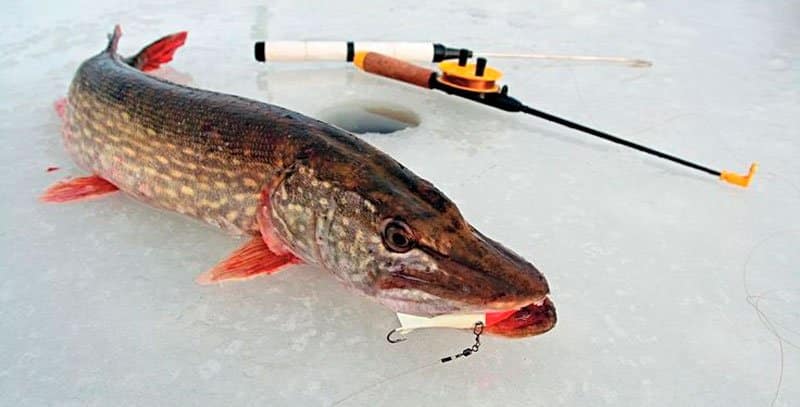
At the beginning of winter, especially when fishing in rivers, stick to your own safety rules! Do not go out on the ice alone, always have a strong rope with you and test the ice strength with your foot before each step. Particularly dangerous are areas with strong currents, areas of hydroelectric power plants and industrial emissions – it is there that often washouts in ice occur.
In the middle of winter, in the so-called wilderness, it is quite difficult to provoke a pike to grip. She rolls down to deeper places and there often stands in a somnambulistic state. The only places where she continues to be active are the points saturated with oxygen:
- polynyas, both artificial and natural;
- areas where streams and small rivers flow into larger ones – where oxygen eddies are formed;
- places among reeds and cattails – oxygen enters through their hollow stems.
Along the last ice, already in spring, peaceful and predatory fish begins to be active and rushes to the water’s edge to the coast, where the first gullies form, which means that the maximum concentration of oxygen is observed. Therefore, at this time, balancers that are suitable for shallow depths will be in favor (see the overview below).
You need to start exploring the reservoir in the summer. It is easier and more promising than in winter. Fishermen who successfully fish on the pond in the summer in most cases have an advantage over the topic, who go to the pond only on ice.
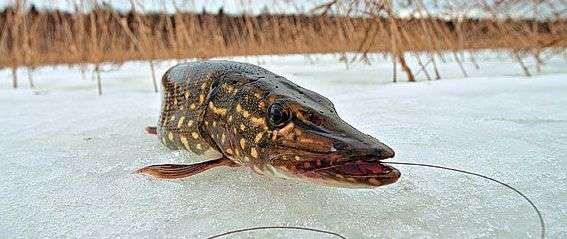
- constantly actively search for a predator until it is found out where it hunts at a given time of year / day
- change approaches to animating lures;
- change the baits themselves in size, color, nature of the game;
- change the depth of fishing;
- go through the holes several times – the pike moves and can return to a sort of “empty” hole;
- monitor changes in weather conditions and respond appropriately to them.
Thaw is the time to go to the pond, it is in such weather conditions that the chances of success are higher than in a hard frost.
Tactics and features of the balancer feed
Once on the reservoir, we select several promising areas for drilling holes (see above) and serially drill holes in a checkerboard pattern or otherwise, if the shape of the reservoir dictates this. Usually, for the first run, 8-15 holes are enough at a distance of 8-12 meters from each other. It is advisable to close the entire perspective area at once. For example, it can be the entire bend of the river, the entire zone of the coastal dump, or the area around the frozen snag. Each hole is fished, starting with the first. The most interesting are selected and celebrated. If the whole area is silent for 30-60 minutes, then the predator is generally kept in a different place, or is passive and you need to try other balancers, or ways of feeding them. On the ice, you need to be not only careful, but also as quiet and invisible to fish! As for how exactly to work with a pike balancer,then there are a few basic techniques. One of the main options:
- The balancer is lowered to the bottom, the depth is measured.
- Undermining the bait from the bottom of 15-25 centimeters.
- There is a pause and line recoil, on which the balance bar sways to the bottom, swinging its sides.
- A pause is made for 1-2 seconds at the bottom.
- The cycle repeats itself.
It is interesting how the balancers and spinners behave under the ice: https://youtu.be/2Ji9EvXWkQk Another option is when, after detonating the bait 10-30 cm from the bottom, the angler begins to animate it at some distance from the bottom. This option is good if the bottom is muddy, or the predator does not feed from the very bottom. Another possible way is when the balance bar is animated in the water column. It is used in cases when the fish rises closer to the surface – oxygen starvation, stands above the snag, etc.
The amplitude of the swing, as well as its sharpness, can vary. 5 to 50 cm – amplitude; and from very smooth stretches to extremely sharp jerks – the sharpness of the game.

What balance bar does a pike bite on in winter: how to choose a catchy type, size and color, rating of the best for 2020
To catch pike from the ice, the standard type of lure is most often used with single lines on the edges and a tee in the center of the bait. There may be additional attractive elements in the form of plastic tails, edges, lurix and the like.
Size matters
In standard conditions, the most demanded size of pike balancers is in the range of 55-100 mm. When choosing the size of the bait, it is worth considering:
- The more active the pike, the larger the balancer should be used. First ice period and before ice drift in spring. The more passive, the smaller. In the wilderness.
- The larger the pike, the larger the bait. It’s simple.
- It is worth “playing” with the size of the bait until you find the one that is optimal for specific fishing conditions.
What color of the balancer is preferable in winter in freeze-up?
The most controversial question is what color of the balancer is to the liking of the pike. There are several opinions. One of them says that for each reservoir, depth, ice thickness, time of day, food base and predator’s mood, you need to select a different color, since it is impossible to guess. So, at the same time, in different water bodies, pike is caught with blue lures with red fins, and in the other with acid balancers. That is, option number one – we
purchase a wide range of colors of inexpensive baits and experiment on the pond . The second opinion, advanced – that under the ice at depths of 3+ meters the fish sees in the ultraviolet range, that is, it is worth
choosing such colors that glow in the UV range – blue, green, purple… And, for example, red in such conditions is visible to fish as black. But in order to test such a theory, one should either become a fish, or buy an uv flashlight and dive, check with this “axiom”. The third opinion is that the color of the balancer is
not so important as its play . Also has the right to life. The choice is yours and … the predator.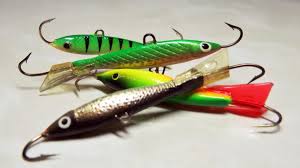
The first basic set for a beginner and more
The most popular balancers among domestic fishermen are Lucky John and Rapala lures, due to their relatively low cost and good quality. But this is not a dogma. We have compiled a rating of the best balancers for pike based on the fact that lures of different price ranges, but necessarily tested in practice and available for sale, fall into it. And also in such a way that among the top 10 there are pike balancers for different fishing conditions – shallow / deep water, for passive / active, large / medium / small pike. TOP-10 of the best pike balancers for winter fishing with a description of the optimal conditions for use and photos:
- Rapala Flat Jig . 4-6 numbers. A quality weapon against a toothed tooth at an affordable price. A sluggish and heavy balancer with a fin in the tail. It can be used at depths of up to 3-8 meters, depending on the size and strength of the current. She plans beautifully vertically, thanks to the pen. One of the balancers from Rapal, which is worth getting in the first place. The price tag is 650-750 rubles.
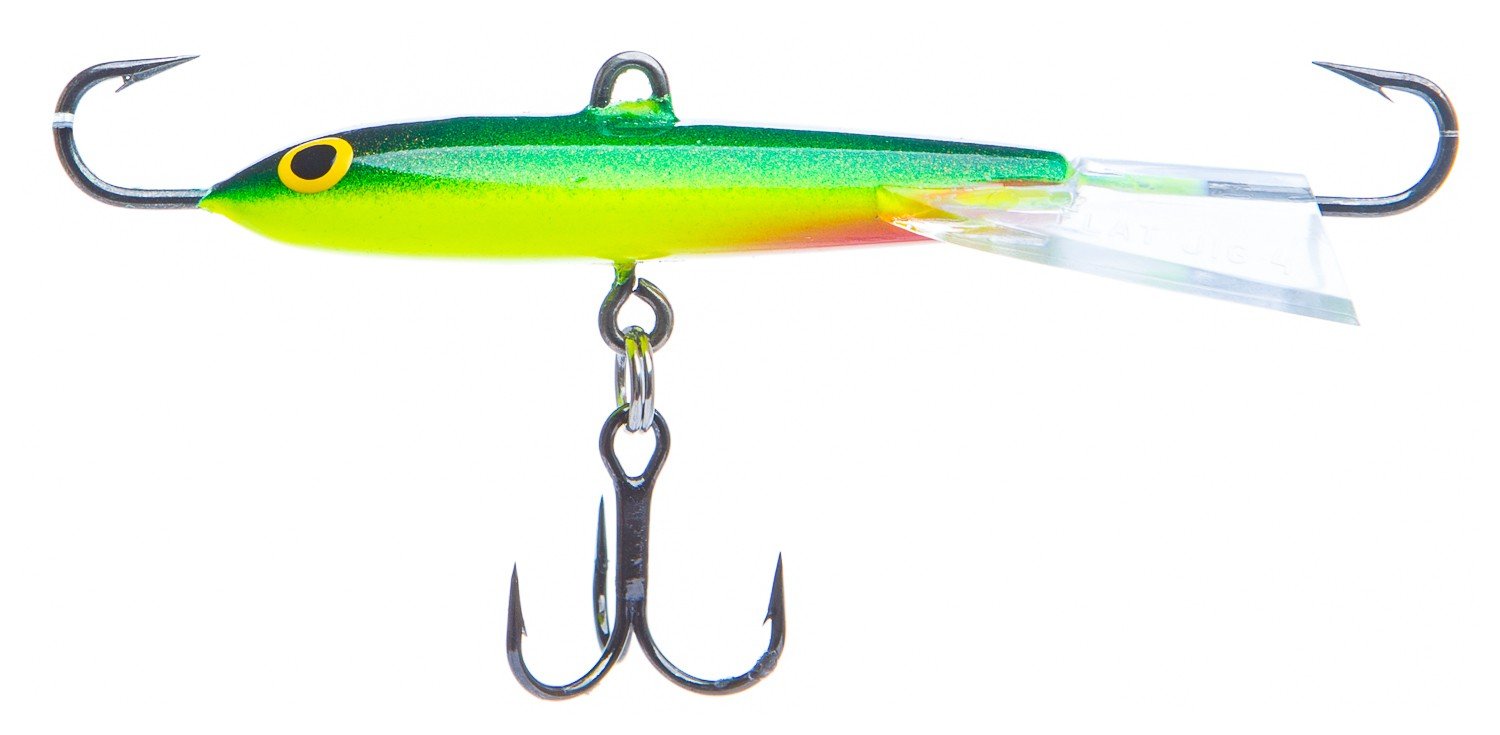
- Rapala Jigging Rap 6-7 numbers. Medium and large balancers from Rapala for perch and large pike fishing. There are models equipped with a tee bead. The center tee can be easily removed, making the Jiggin Rap a snap-on for sturdy places. The game is sweeping due to the wide back blade. Animation at the bottom with explosions from it with strokes of the rod and further pauses of up to 10 seconds, in which the balancer plays with wide low-frequency glides. The price tag is 700 rubles.
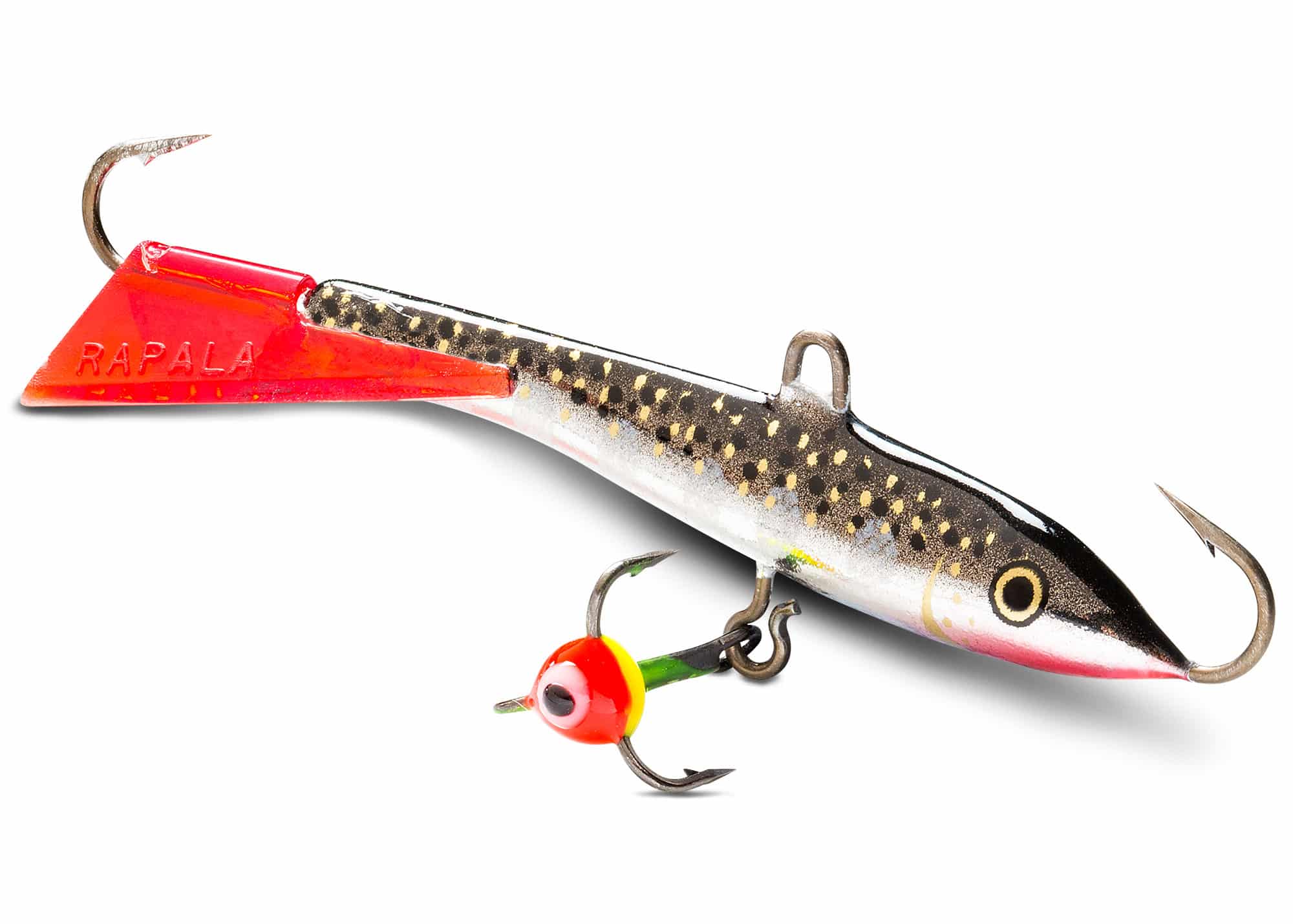
- Rapala Snap Rap 6-8 numbers. It just so happened that the third place in the list of the best balancers for fishing pike (especially in the winter wilderness!) Is taken by the balancer from Rapala Snap Rap. A unique lure, especially good for pike fishing, which likes the sweeping high-amplitude and low-frequency SnapRap play. It is achieved by an interesting design – the body of the balancer is poured into the one-piece wing. Animation – sharp jabs with a rod in a vertical plane, while the balance bar with wide glides goes to the sides, creating maximum vibration. Will seduce the most passive predator. The price tag is 600-650 rubles.
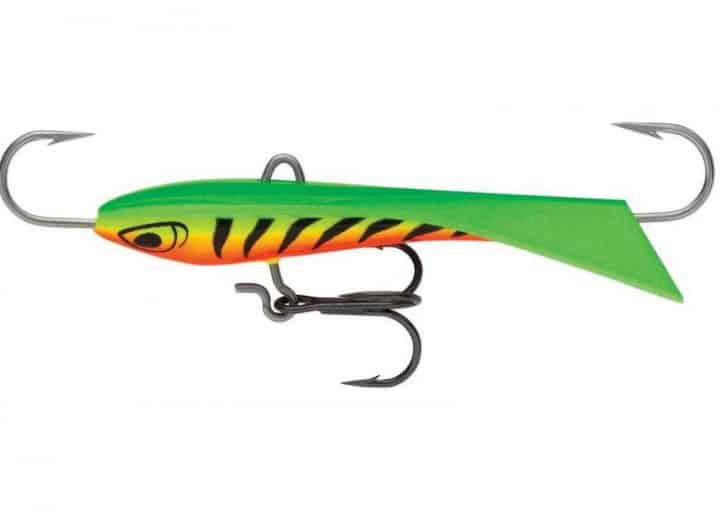
- Lucky John Classic 7-9 numbers. A budget and very popular balancer for pike fishing. Compact and heavy with a sweeping body, these lures are suitable for fishing at great depths in a fairly strong current. Has a wide sweeping flow in the passive phase of the animation when falling. The price is 200-300 rubles. Very humane!
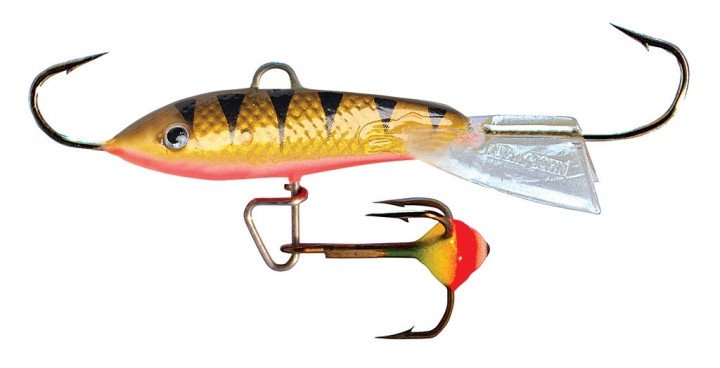
- Lucky John Baltic 4-6 rooms. A plump fat man with a small size has a large weight, widely scattered in numbers 4-5-6: 9-21-41 grams. It has an intense game with chaotic throws to the sides, reminiscent of a fleeing fry. Good for active pike, collecting it from a long distance around the hole. Has a good balance, which is important when fishing on the current. Working depths are 4-7 meters. Quality paint and tees are rare in this price range! The price is 200-290 rubles.
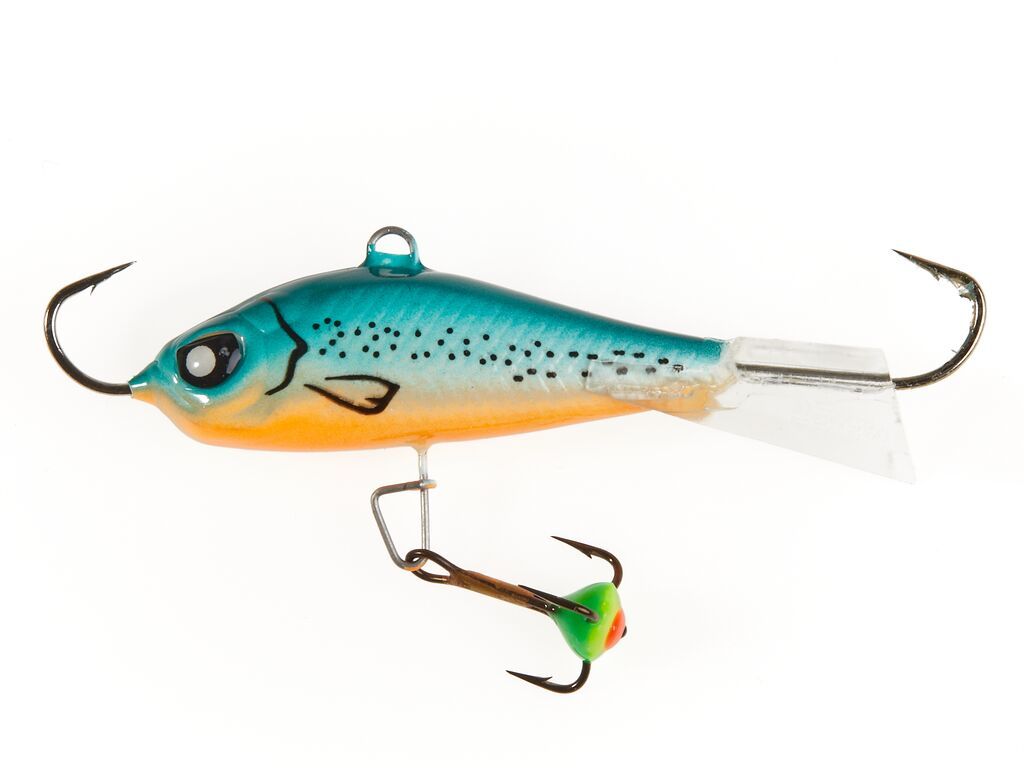
- Lucky John Mebaru 57 and 67 , 13 and 18 grams, respectively. Another handsome man from Lucky John. Suitable for deep water and light currents. The powerful tail fin ensures stable play in extreme cornering points on a fall without blockages. Three attachment points provide a wide range of applications. The attachment for the rear hole will provide the quietest play – for the deaf winter and for the passive pike it is. The fastening for the middle hole gives the most sweeping play, which is preferable in most cases for pike. And when attached to the front hole, the lure plays aggressively, the vertical component is maximum. Latvians know how to make high-quality fishing products at an affordable price, the cost is about 500 rubles.
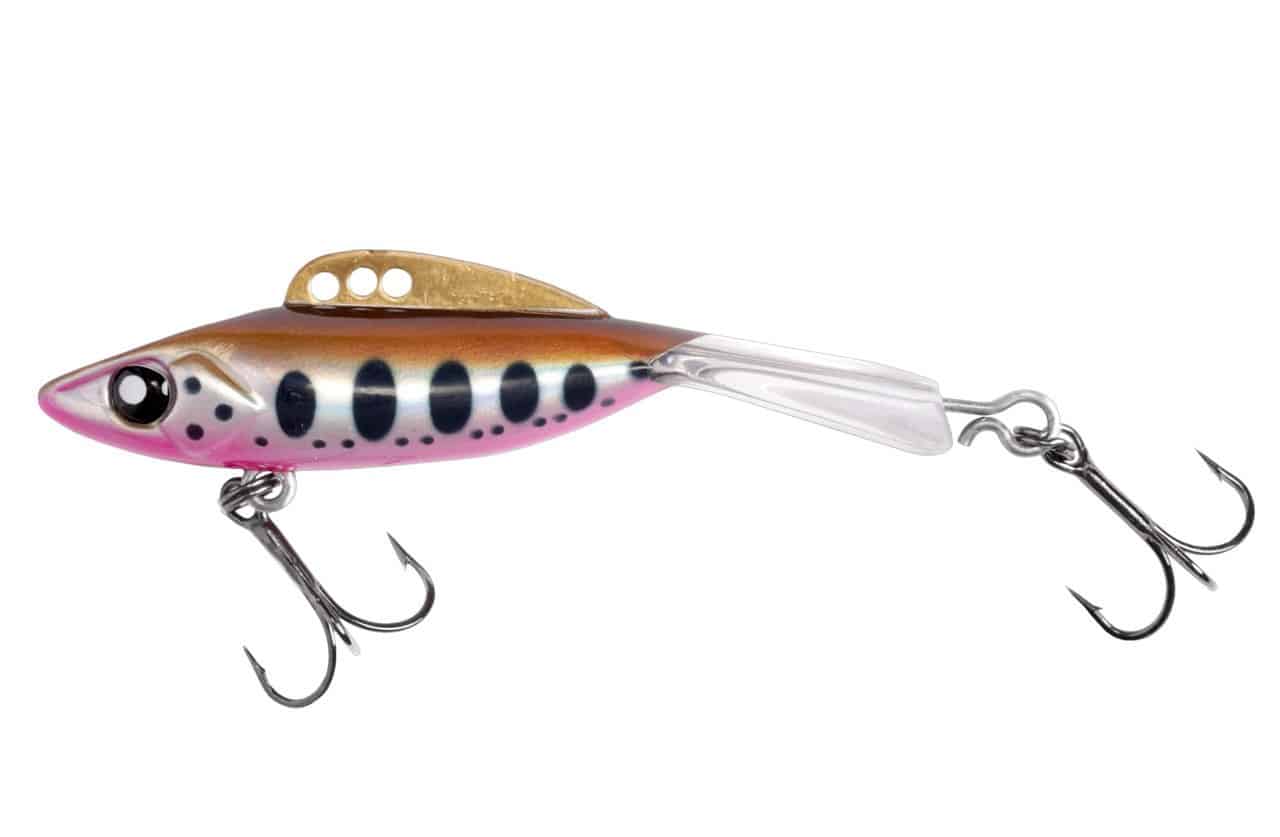
- Akara Pro Action Tensai 57 and 67, 11 and 15 grams. An interesting balancer from Akar, for catching a predator at shallow and medium depths of 2-5 meters. It has three holes on the back, by varying the hook point, the game of the bait can also be varied. What is important if the mood of the toothy is not clear, or on a new reservoir, where it is not even clear who exactly is to be caught. The fluorescent coating will play a role in muddy waters and when fishing from muddy snow-covered ice. The price tag is 300 rubles.
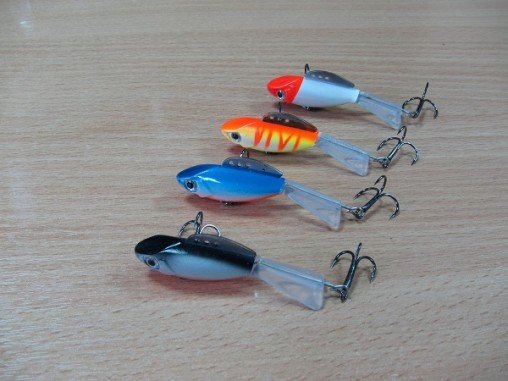
- Scorana ICE FOX 55.65.75.85. True pike catchers on ice will always find it in a box. Narrow balancer, holds the current well, although on a strong jet it is better to use heavier Rapal balancers. Amplitude play seduces the toothed tooth in a state of various activities. The cost is 250 rubles.
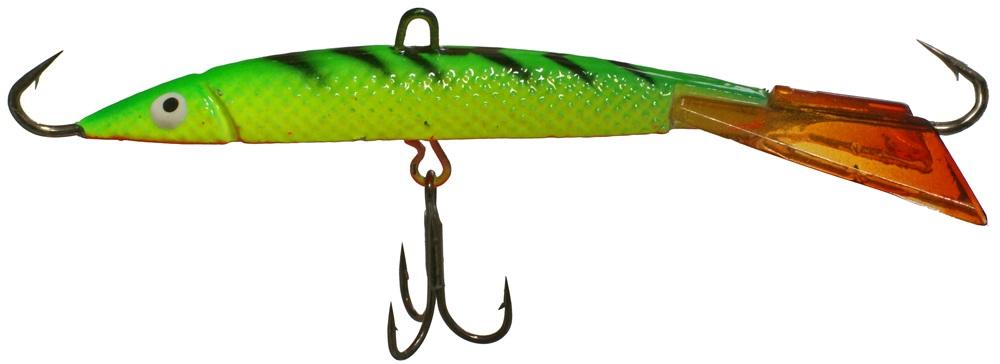
- Kuusamo Tasapaino X-Pro 60 and 75 . Lightweight but massive balancer, suitable for shallow water, or in conditions where maximum visibility / massiveness is required at minimum falling speed. An interesting game because of the oblique ponytail. Catchy where other baits are either silent or completely inapplicable. A wide range of colors, quality fittings, as a bonus. Well, the price tag, like everything from Kuasamo, bites 700-800 rubles, but it’s worth it, especially if you have to fish in non-trivial conditions.
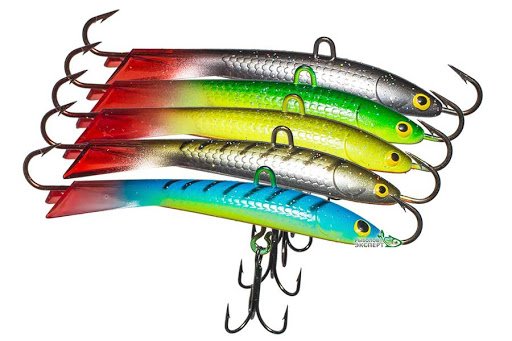
- Karismax Koko 3 and 2 rooms. The second number is 7 cm, 23 grams and the third number is 6 cm, 16 grams (this is exactly the case with Karismax). Interesting bait not the most popular office (because of the price tag). All-rounders for medium depths. Suitable for most standard conditions – slow current, bays, reservoirs. The cost is 770-900 rubles.
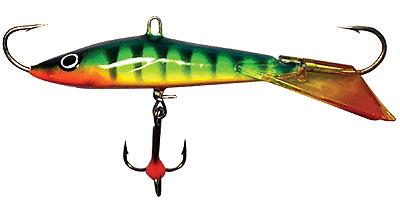
The best and most efficient balancers according to another author: https://youtu.be/zy0Ghrk70iw
Tackle preparation – what to look for?
A rod for fishing pike on a balance bar should be powerful enough, whipping and tough. Length in the range of 60-70 cm. The whip is sonorous and durable. It is imperative that the rod is light, otherwise the hand will literally fall off when balancing during the day. Handle made of neoprene, dense foam, cork.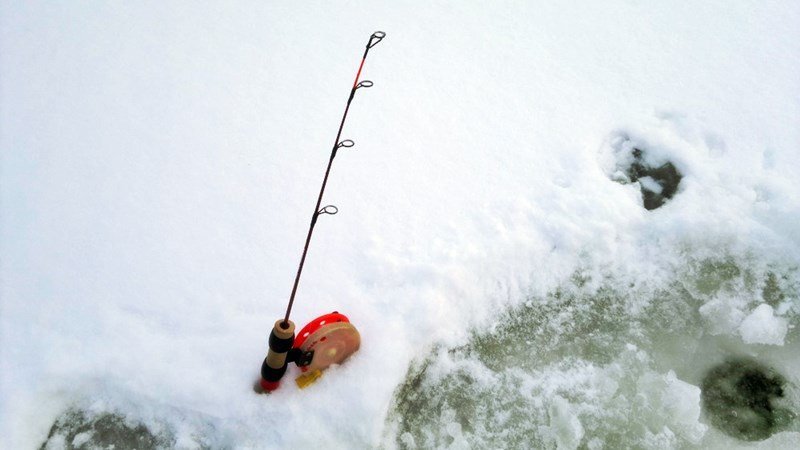
Some colleagues recommend using special lubricating gels to protect the cord from freezing and exposure to aggressive environments. From our experience, we can say that the gel washes off rather quickly and provides insufficient protection for the thread. But! Perhaps we came across such a copy.

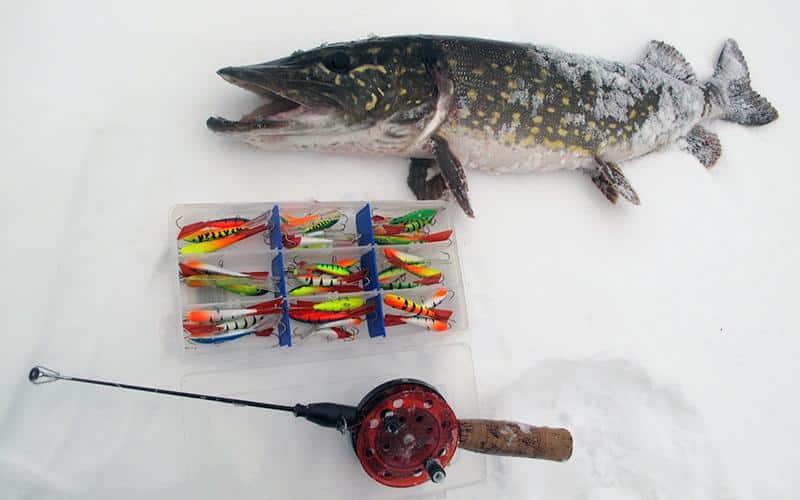
You need to consider! In any case, a leash, even the thinnest and most flexible, will interfere with adequate balance bar performance. But here you need to find a balance. If the priority is to bite medium and large pike, then the balancer must be protected from the teeth of the predator. Plus, it is worth considering such a nuance that when fishing for pike, rather large balancers are used, and they are not so dependent in terms of the game on the use / not use of leash materials as smaller “perch” ones. If the pike is by-catch to the perch, then it is better not to coarse the tackle with a leash, but to rely on the strength of the line, luck and the native Russian “maybe”.
Winter is a difficult time for successful fishing. Sometimes, the so-called “exits” – periods of pike activity occur once or twice a day and for 5-15 minutes. Sometimes the knowledge of these intervals of activity in a particular body of water and the ability to wait is more important than all other factors of success. And only the most patient and experienced anglers can catch these moments, and therefore such a coveted trophy.
